|
|
| Jamaica Activates Tsunami Procedures |
 At about 5:53 pm on January 12th, 2010, neigbouring Jamaica felt the impact of a magnitude 7.0 earthquake which struck 15 km South West of Port-au-Prince, Haiti. The earthquake occurred some 10 km below the earth’s surface (United States Geological Survey [USGS]), and based on its’ location, magnitude and depth characteristics, the Pacific Tsunami Warning Centre (PTWC) issued a local tsunami watch for Haiti, Cuba, The Bahamas and the Dominican Republic. At about 5:53 pm on January 12th, 2010, neigbouring Jamaica felt the impact of a magnitude 7.0 earthquake which struck 15 km South West of Port-au-Prince, Haiti. The earthquake occurred some 10 km below the earth’s surface (United States Geological Survey [USGS]), and based on its’ location, magnitude and depth characteristics, the Pacific Tsunami Warning Centre (PTWC) issued a local tsunami watch for Haiti, Cuba, The Bahamas and the Dominican Republic. Based on the felt event, the receipt of the tsunami watch bulletin from the Pacific Tsunami Warning Centre (PTWC) via email, and later confirmation by the Seismic Research Centre, University of the West Indies, the Office of Disaster Preparedness and Emergency Management (ODPEM), in following the national tsunami response procedures recently developed in conjunction with the Caribbean Disaster Emergency Management Agency (CDEMA), activated the national emergency response mechanism. The activation process involved telephone consultations with the Prime Minister’s Office, CDEMA, the Jamaica Meteorological Service (the tsunami warning focal point or official designated government agency to receive the tsunami bulletin information), the Jamaica Defence Force and other key agencies. Even though Jamaica was not identified in the bulletin, given the proximity of the island to those identified and to Haiti itself, it was determined by local officials that all efforts should be taken to safeguard local populations and the tourism interests along the northern coasts in particular.
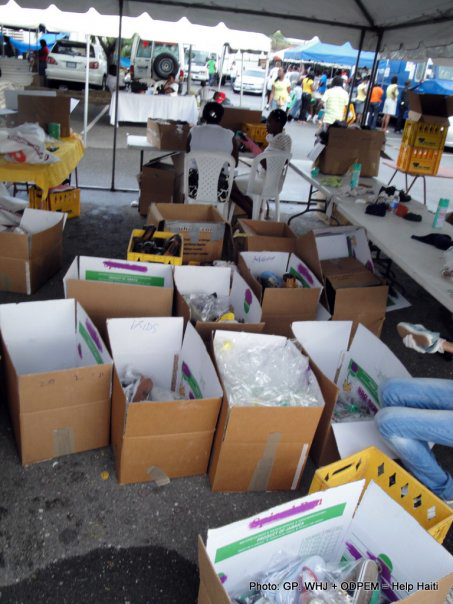
As the sub-regional focal point with responsibility for Haiti and The Bahamas within the CDEMA system, Jamaica’s priorities at the time were also focused on providing any necessary support to these countries. A tsunami did not impact Jamaica however; National Geographic reports indicate that the earthquake produced a number of tsunamis in Haiti, with waves averaging up to 3 m (10 ft) in height. In Goave, a town along the Bay of Port-au-Prince, a tsunami claimed three lives and several homes were destroyed.
At the regional and national levels, there are activities which are being pursued to address some of the challenges experienced by the Jamaican authorities and enhance preparedness for tsunamis and other coastal hazards in the Caribbean.
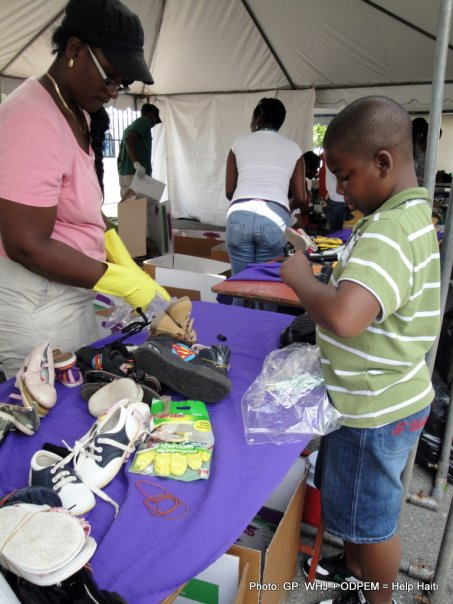 Jamaica is one of eighteen (18) Participating States which will continue to benefit from the suite of products developed under the Tsunami Smart Initiative being undertaken by CDEMA. The ODPEM Head outlined that the development and adoption of national tsunami warning protocols and the production of public awareness materials are two immediate outputs from which Jamaica benefitted under the USAID sponsored TCHWS Project, and these outputs were pivotal in strengthening the local mechanisms for public awareness and coordinated decision-making in the dissemination of information during the January 12, 2010 event. Public awareness and teacher education training activities are to be executed in Jamaica under a further CDEMA-led initiative.
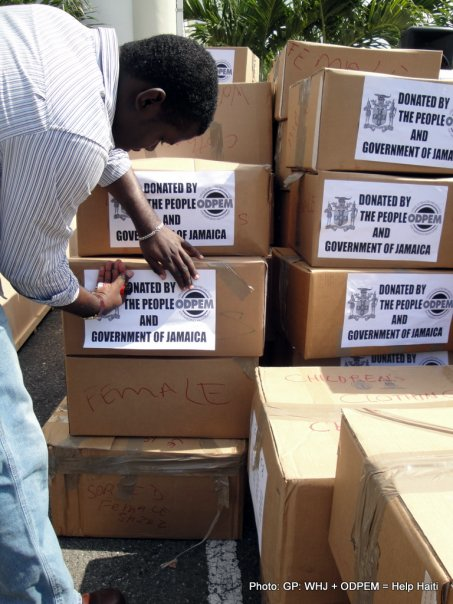 The response of the Jamaican authorities is a good example of an activation based on a felt event for CDEMA PS, and in the process has indeed highlighted the vulnerable nature of our Caribbean States to tectonic activity and secondary hazards such as tsunamis. CDEMA will continue to support the people and Governments of the region as we seek to enhance the resilience of our at-risk coastal communities. The response of the Jamaican authorities is a good example of an activation based on a felt event for CDEMA PS, and in the process has indeed highlighted the vulnerable nature of our Caribbean States to tectonic activity and secondary hazards such as tsunamis. CDEMA will continue to support the people and Governments of the region as we seek to enhance the resilience of our at-risk coastal communities.
|
_01.png)

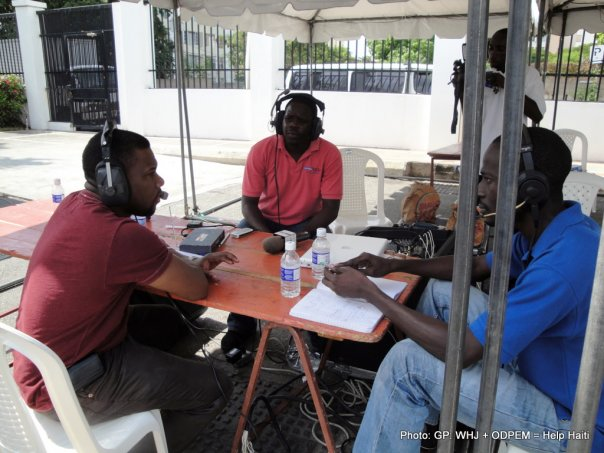 Mr. Ronald Jackson, Director General of ODPEM indicated that on activation of the national system, with the assistance of all electronic media houses, the public was immediately informed of the Tsunami Watch which had been issued for neighbouring islands, and were advised to be on the alert for tsunami waves and to stay away from the coasts. In assessing the island’s response to the event, Mr. Jackson highlighted the timely notification and the strong cooperation of electronic media houses as the two key
Mr. Ronald Jackson, Director General of ODPEM indicated that on activation of the national system, with the assistance of all electronic media houses, the public was immediately informed of the Tsunami Watch which had been issued for neighbouring islands, and were advised to be on the alert for tsunami waves and to stay away from the coasts. In assessing the island’s response to the event, Mr. Jackson highlighted the timely notification and the strong cooperation of electronic media houses as the two key 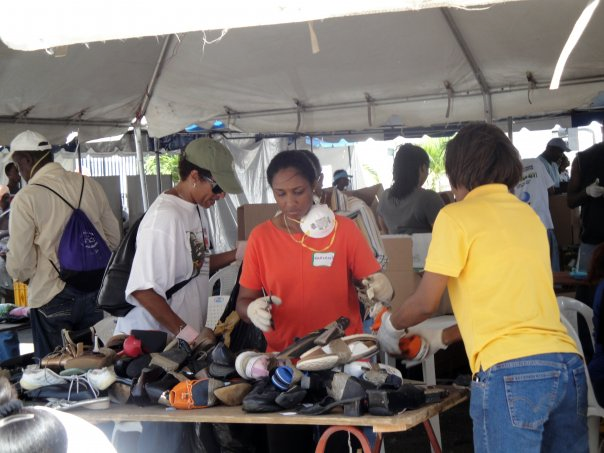 Authorities in Jamaica have for a long time focused on earthquake and Tsunami issues in their annual earthquake awareness programmes and disaster preparedness month. Subsequent to January 12, 2010 they have identified lessons that will be built into the Earthquake Plan review process, the protocols developed under the TCHWS Project have been approved at the national level, and there are on-going discussions and negotiations between the Office of Disaster Preparedness and Emergency Management (ODPEM), Jamaica and the local Telecommunications stakeholders and Cable companies regarding mechanisms for warning dissemination in coastal zones. The initiatives will undoubtedly support the comprehensive Tsunami and Other Coastal Hazards Warning System for the Caribbean and Adjacent Regions.
Authorities in Jamaica have for a long time focused on earthquake and Tsunami issues in their annual earthquake awareness programmes and disaster preparedness month. Subsequent to January 12, 2010 they have identified lessons that will be built into the Earthquake Plan review process, the protocols developed under the TCHWS Project have been approved at the national level, and there are on-going discussions and negotiations between the Office of Disaster Preparedness and Emergency Management (ODPEM), Jamaica and the local Telecommunications stakeholders and Cable companies regarding mechanisms for warning dissemination in coastal zones. The initiatives will undoubtedly support the comprehensive Tsunami and Other Coastal Hazards Warning System for the Caribbean and Adjacent Regions.



